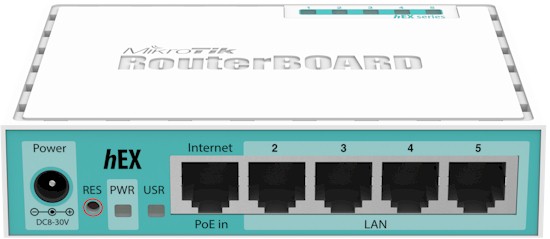
Read on SmallNetBuilder

definitely, it does require a bit of experimenting and browsing through choices of algorithms. It will require some graphics so i will prepare powerpoint too. I've used it in the past but my router is in transit as i've moved.If you could help Tim setup QoS ("bandwidth management"?) I'd be grateful. For me, that's a very important topic for a tutorial to include.
I should have said I tried to get SMB file sharing to work and got an error regarding file attribute changes using my Robocopy script. I updated the review to reflect this.@thiggins , you can always ask me for help with configuring, granted the average user will likely throw this out the window.
You can use usb for storage. I have a microSD in my CCR with some linux OS files for tftp booting, it makes a great tftp server too. You can also use usb storage as a cache for transparent web proxy.
FTP is the best way to upload files to the router. Never use drag and drop over winbox or web as it is unreliable.
the low cost of mikrotik has made it very popular in 3rd world countries, hence the less english speaking community. I started learning mikrotik way before they came up with any certs and newbies get picked over meIt takes some tinkering, but even a novice can get it doing a lot. I think the issue is, the mikrotik community is just not as helpful (for free) as other communities. Also not as many native English speakers, which makes getting help another barrier.
This product has no Wi-Fi. But there are other Mikrotiks that do.So if I wanted to run IOT devices on a separate wireless router, and keep my home network isolated from them, would this router have that configurability?
This product has no Wi-Fi. But there are other Mikrotiks that do.
Either way, it supports the VLANs you would need for separation.
Yes. But since many IoT devices are wireless, you'll need to connect hubs and bridges to the same port(s). A switch will do that.If the AP doesn't support VLANs, can the hEX isolate based on the ethernet ports?
I just realised that there is an option called change TCP mss, this helps.Try setting TTL to 64 to prevent packet loss:
/ip firewall mangle add chain=prerouting out-interface=!local action=change-ttl new-ttl=set:64 passthrough=yes
I just realised that there is an option called change TCP mss, this helps.
I dont accept change TTL as a valid option (thrust me you really dont want to change TTLs as its useless and suggested by the indians as a way to bypass NAT detection).
I know for ISPs you dont need to use this, only for VPNs and tunnels it helps.Changing mss would only be required for smaller MTU like pppoe or vpn. If your ISP supports RFC4638 baby jumbo there is no need for pppoe mss mangle, just increase the MTU of the physical port with 8. But for VPN yes you need to catch this. Cisco has a good paper on this: https://www.cisco.com/c/en/us/suppo...ing-encapsulation-gre/25885-pmtud-ipfrag.html


The problem is that the default queue uses bfifo (bit rate first in first out) which can cause bufferbloats due to the requirement of a buffer, hence why im making a tutorial.I've had one of these boxes for a few days - bandwidth management seems to work.
Here is my setup -
First set up a main queue for all your traffic, then set up child queues for your devices. I had to turn off the single firewall rule enabling fasttrack to see the correct real-time bandwidth figures in my queue table.
Also used the "default" queue option - not "default-small" -
So adjust the firewall, set up main queue, set up child queues - should be able to control traffic/queue(this video may help too - you can try default small for queue type, I went with default).
Other problems with Mikrotik RB750GR3 are:The problem is that the default queue uses bfifo (bit rate first in first out) which can cause bufferbloats due to the requirement of a buffer, hence why im making a tutorial.

Welcome To SNBForums
SNBForums is a community for anyone who wants to learn about or discuss the latest in wireless routers, network storage and the ins and outs of building and maintaining a small network.
If you'd like to post a question, simply register and have at it!
While you're at it, please check out SmallNetBuilder for product reviews and our famous Router Charts, Ranker and plenty more!
